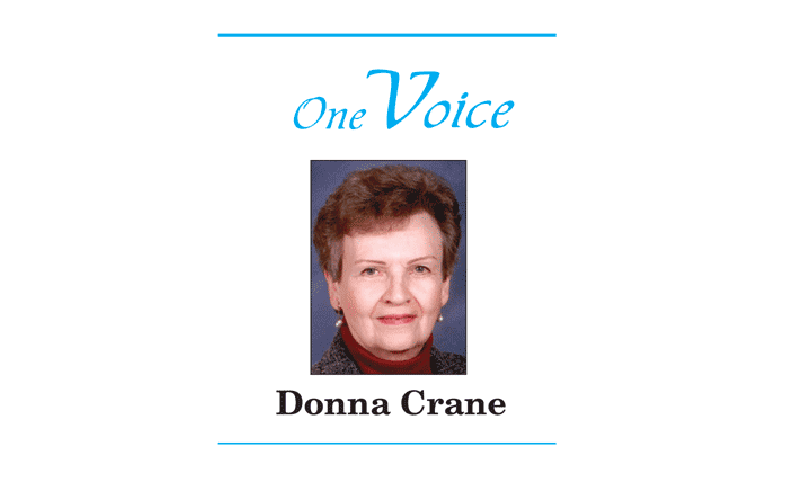
Last of three parts
The second part is available at thevoice.us/teaching-native-american-history-various-drastically
Native American history education can vary. Dave Constantin’s article in the magazine, “Teaching Tolerance” offers a good method to utilize.
“To connect the dots between past and present and give students a sense of history as a living, breathing, entity, social studies teacher Paul Rykken and his colleagues at Black River Falls High School in Wisconsin found that an integrative approach worked best. ‘In each of our social studies programs where it seemed natural to bring in Native history, we started to do that,’ he said. ‘For example, I teach a politics course, and we started to teach the U.S., Wisconsin and Ho-Chunk constitutions in parallel. And that was kind of an interesting, nonthreatening way to bring that in. I’ve always thought that, if you could get the concept of sovereignty across well, many of the other things fall into place.’
“Rykken has been teaching at the school since 1990, the year Act 31—a mandate similar to Montana’s IEFA—first went into effect. Although he’s quick to point out they still have a long way to go, Rykken has seen a definite shift in the mentality surrounding teaching American-Indian history.
‘“In the early stages, there was more resistance from the non-Native population,’ he said, echoing Carjuzaa’s and Baldwin’s observations about Montana. “But I think a lot of that has gone away. And it’s been interesting to watch that. I think we’ve got kids talking about things that before they weren’t really comfortable talking about. And, I don’t want to make this sound better than it is, but getting kids to talk and have thoughtful discussions about race is very challenging. It’s a team effort. It isn’t something that just happens. You’ve really got to be deliberate about it.’
“The good news is that progress, while painfully slow on the whole, is being made. An increasing number of states are taking notice of Montana’s successes and moving toward similar models. Washington just signed its own promising Indian education mandate (SB 5433) into law this May, after a protracted struggle by advocates to change language from ‘encouraging’ schools to integrate tribal history, culture, and government into their curriculum to making it mandatory. ‘There are so many people across the country who are working very, very, hard to make sure that American Indians don’t continue to slip through the cracks, and that we create a growing awareness of American-Indian history, identity, and contemporary issues,’ said Mandy Smoker Broaddus, the director of Indian education at the Montana Office of Public Instruction.
“Fortunately, online access to a host of excellent, free, resources means teachers no longer have to wait for policy changes at the top to start improving how this subject is taught in their classrooms right now. It will take work, but more educators are seeing the value in resurrecting a subject that has been sitting on the back burner for far too long. ‘The history that we’re trying to put in place is the best for all the students,’ said Rykken. ‘I know that sounds idealistic, but I absolutely believe that. We’ve got to get away from this kind of one-dimensional, Eurocentric version of the history. It’s much more complicated. There is a way to do it, but it is a challenge.’
Recognizing Real Indians
“Debbie Reese was a schoolteacher in New Mexico and Oklahoma before getting her Ph.D. in curriculum and instruction at the University of Illinois and becoming a vocal advocate for stronger American-Indian curriculum. In 2006, she created American Indians in Children’s Literature (AICL), a blog that highlights positive views of American Indians in children’s literature and works to change negative stereotypes portrayed in commonly taught books. It was a response to obvious education gaps she was aware of, going all the way back to when she was a child growing up on a small Pueblo reservation in northern New Mexico.
‘“My clearest memory was that the Indians I saw in books and movies were not real,’ Reese said. ‘I knew what real was. I knew our dances and our practices and what we were. And we called ourselves ‘Indians.’ It wasn’t until I was much older that I realized there were a lot of different tribes in the country. It wasn’t just us. And that speaks to what we got in school. Not much. That’s because the curriculum delivered in schools across the United States is very much alike. It doesn’t matter if you’re going to school in Rhode Island or you’re going to school in New Mexico, you’re going to get the same instruction.’
‘“Reese sees literature as an obvious way to fill in those gaps left by the standard textbook curriculum. One of her favorite sources for such books is Birchbark Books in Minneapolis, Minn., which is owned by Native writer Louise Erdrich. ‘That’s where I buy a lot of books from because I know they’re careful in their selection and they’re looking for the same kinds of books I’m looking for.’ Reese points to the grassroots campaign. We Need Diverse Books, which aims to address the lack of diversity in children’s literature. For a list of her recommendations of the best books and authors on American-Indian subject matter, and to find out more about her efforts, visit her website,” Constantin wrote.

